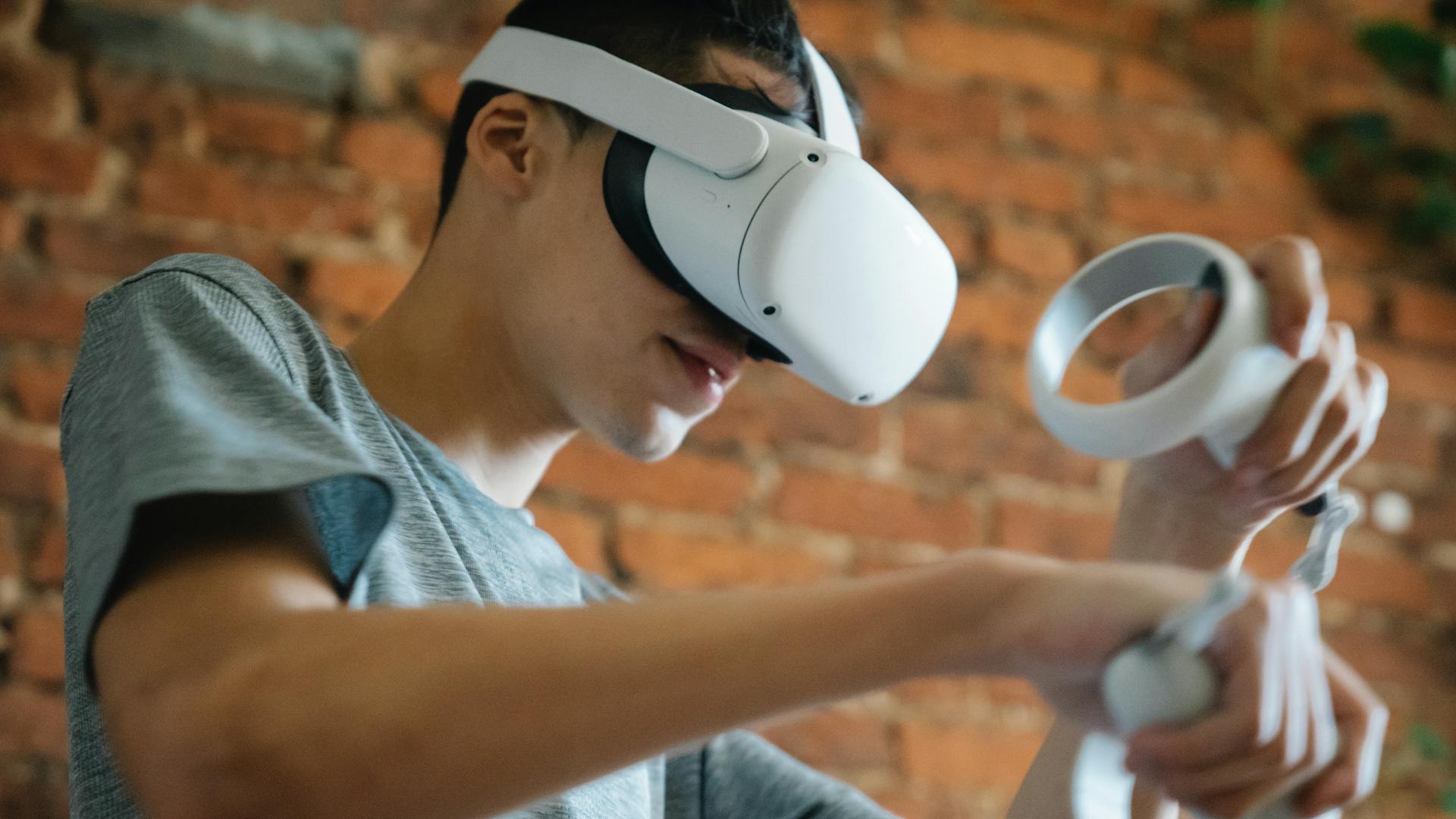The origin of VR

The history of virtual reality simulation: from past to present and future
Virtual Reality (VR)
We live in an era where virtual reality is increasingly on the rise. Virtual computer simulation is a new world, perceived through VR glasses, where you use controllers to perform actions. In this way, you slip into the skin of a new character in another world. This can be either in the real world or in a fantasy world.
But VR is a lot older than most people think. In fact, the technology was conceived 80 years ago. But the rise of virtual reality took a big leap in 2014. That's when big players like Samsung, Google, Sony and Facebook saw something in virtual reality and therefore started working with it. What used to be seen as science fiction is now a widely used technology.
The past of VR
The idea of computer simulations has quite a bit of history behind it. Virtual reality originated from a stereoscope idea by inventor Charles Wheatstone in 1838. The stereoscope was a device, that allowed you to see pictures with both eyes. The images were separate and were therefore given a 3D effect. The differences in both eyes made it possible to perceive depth. The viewmaster from the 1980s was also a precursor to this modern computer simulation. Because of the cooperation of our eyes, we also see depth through our eyes in the real world. Each eye perceives perspective separately.
In 1935, the book "The Pygmalion Spectacles" was released in which the author already wrote about VR glasses. It would be futuristic glasses in which sight, sound and taste would be experienced. Although smell and taste is currently not possible even with the most advanced headsets. In the 1950s, Morton Heilig developed the Sensorama. The aim was to stimulate the senses to invent a new reality and to do so in combination with images, sound and playing with sensory perception.
In 1961, the first VR glasses "Headsight" were invented. Ivan Sutherland was the inventor of this new successful technology. The 3D image was stereoscopic and the glasses also had stereo sound. Head tracking was also used. So Sutherland's invention was the forerunner for the VR headsets as we know them today. In 1969, 3D technology was brought into development, because 2D would not achieve the desired effect of experiencing that true simulation. The name at the time was "Artifical Reality". The name virtual reality was not assigned to the technology until 1987.
VR was used for various professions in 1991. The technology was used in the military, the hospital and at NASA. Game company SEGA also discovered the setup and started using it. This allowed gamers to experience simulation for the first time. The simulation was also noticed by Nintendo. The company launched Virtual Boy in Japan in 1995. This was a VR glasses and game console. But the poor image quality and only a few options such as lack of head tracking did not make the simulation very popular. The visuals also encouraged nausea and headaches. This Nintendo flop was so bad that the console was never sold in Europe. After that, it was quiet around virtual reality devices for 15 years.
Oculus
It was not until 2011 that the technology re-emerged. Lucky Palmer invented the Oculus Rift which became a true success. This made the teenager a millionaire. The invention consisted of a prototype with duct tape, which the teenager assembled in his shed. With crowdfunding the glasses became a reality. In the year 2014, the Oculus got its successor. The Oculus 2 was bought by Facebook founder Mark Zuckerberg for $2 billion. More and more big companies also started using VR. After 2014, more advanced glasses hit the market and currently the technology is still developing. Images are also becoming more and more real. Headtracking is fully integrated into the latest glasses and you use the controllers to perform different actions.

Applying Virtual Reality
Today, virtual reality is fully integrated into both the entertainment industry and various other sectors. Cinemas, too, are interested in simulation. Just watching a film is still a normal remote experience and this is not so special these days. The aim is to make films increasingly realistic as well, so that you experience the film up close. Through simulation, it feels more like you are a character, playing along in the film. You literally experience everything around you on a 360-degree screen.
The technology is also ideal to use during training, education and courses. By training in VR, the trainee is immersed in a virtual world. Reality is simulated and in this way, potentially dangerous procedures can be trained safely. It is also possible to train at locations or with objects that do not yet exist. Think of simulations that allow you to recreate a virtual surgery in a hospital or a virtual machine.

